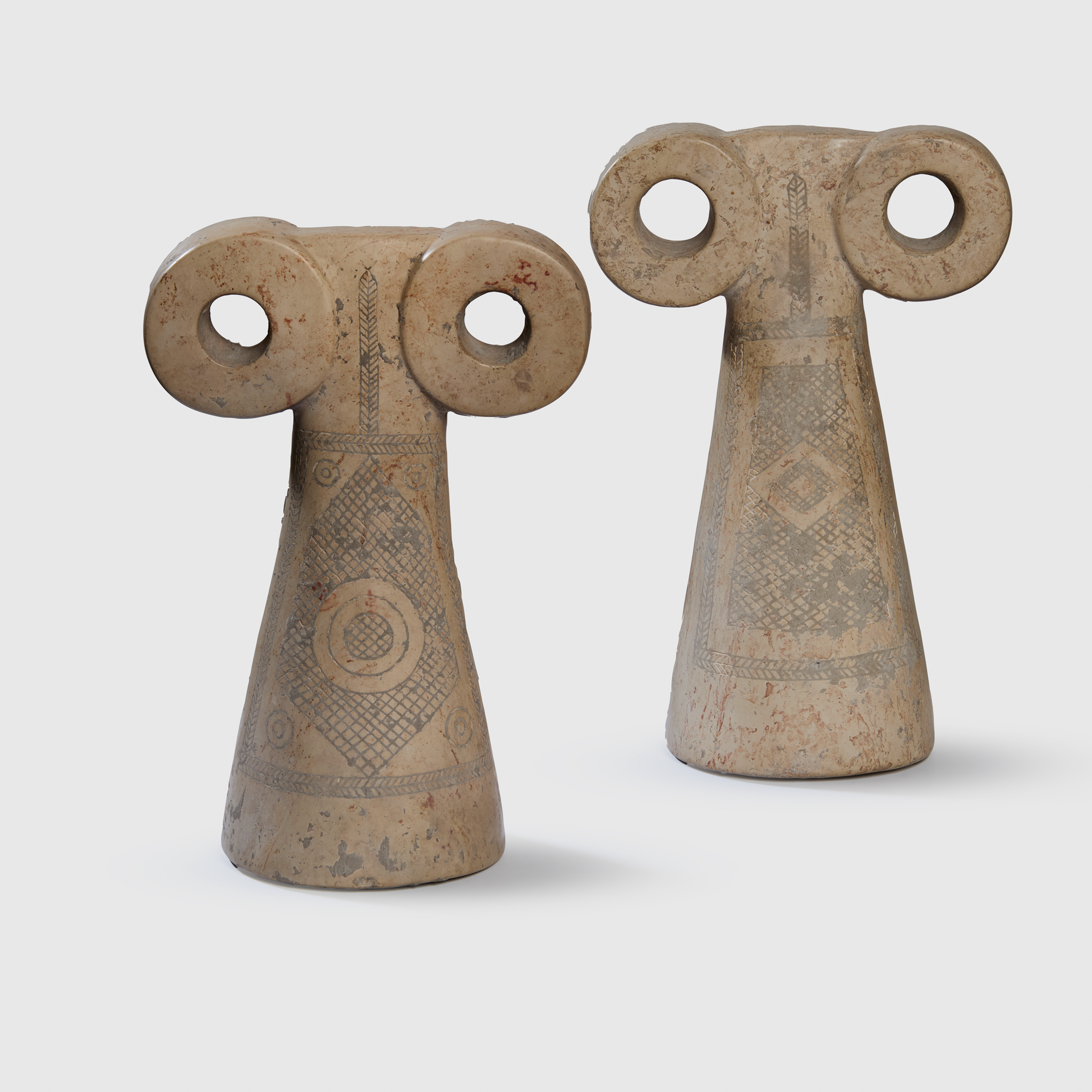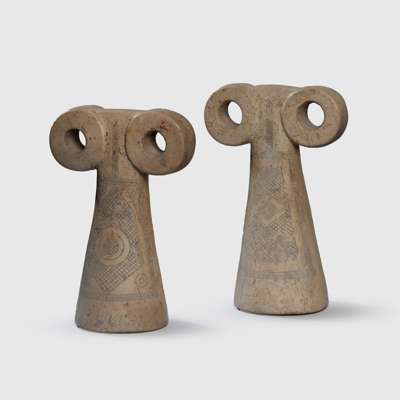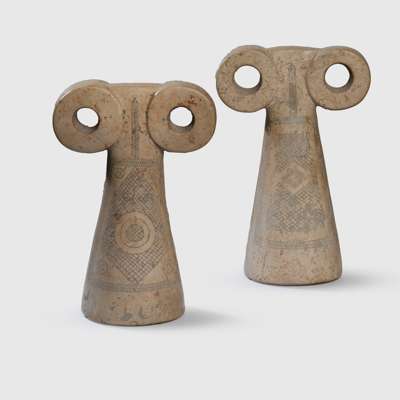
Lot 109

A PAIR OF "EYE IDOLS"
WESTERN ASIA, URUK PERIOD, 4TH MILLENNIUM B.C. OR LATER






Auction: 26 November 2025 at 14:00 GMT
Description
carved and incised limestone,
Dimensions
tallest 29.2cm
Provenance
With Bernard Blondeel, Antwerp, accompanied by statement dated 9th March 2004.
Collection of Suzanne (1930-2025) and Joris Onzea-Govaerts, Itegem, Belgium, acquired from the above for circa EUR 110,000.
The Onzea-Govaerts was principally curated by Axel Vervoodt and many pieces from the collection were recently sold at Christies.
Footnote
Though separated by vast distances and thousands of years, the Sabaean votive plaque of ancient South Arabia (lot 110), the Mesopotamian eye idols (lot 109), and the Aboriginal Australian churinga (lot 107) share a common purpose. Each acts as a bridge between the human and the spiritual- linking people, place, and belief through lasting acts of memory and devotion.
The Sabaean votive plaque was dedicated to the deceased within the sanctuaries of deities such as Almaqah or Shams. Its inscriptions record prayers and names, ensuring that the memory of the dead remained present among the living and before the gods. The plaque gave tangible form to remembrance and devotion within sacred space.
In Mesopotamia, small alabaster eye idols were placed in temples such as the Eye Temple at Tell Brak. With their wide, staring eyes, they served as constant witnesses to worship, symbolising prayer and the connection between people and their gods.
The churinga, from Central Australia, also links the living and the ancestral. It embodies a being from the Dreaming and is treated as a living presence. Used in ceremony, it reconnects people with the creative acts of their ancestors and the land itself.
Across these traditions, the sacred is made real through material form. The Sabaean plaque keeps the dead in memory, the Mesopotamian idols sustain devotion, and the churinga maintains the living bond between people and their ancestors.





